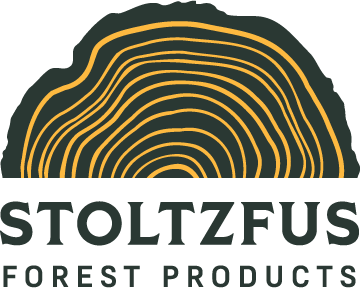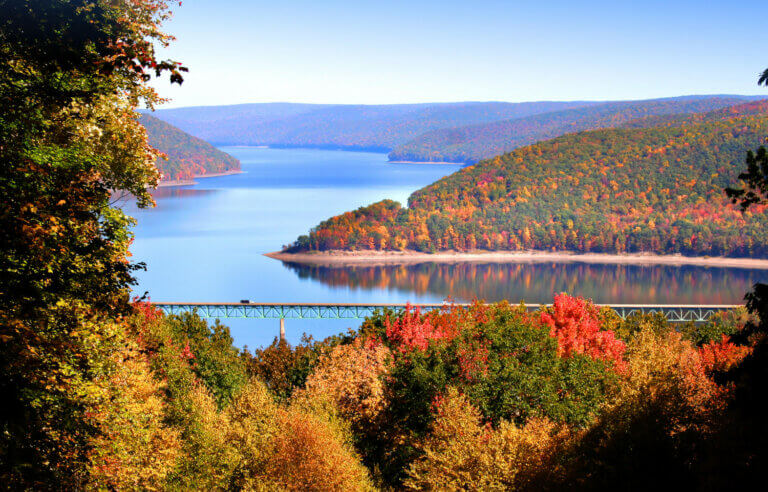The state of Pennsylvania gets its name from its forests. In Latin, Pennsylvania means “Penn’s Woods.” Pennsylvanian Forests, which cover almost 60% of the state’s land area, support around 30% of the state’s economy. These forests have historically been the building blocks of the country when early settlers cleared them to meet the timber demands of a rapidly growing nation. Today, their benefits extend beyond timber and wood products into recreation, carbon sequestration, wildlife, and water quality.
The forests, in terms of distribution, usage, ownership and composition have changed with time, but their importance has only kept on growing. This also means that their wise and proper management is more important than ever so that not only our needs from these forests can be met, but also those of all future generations.
In this article, we will discuss why managing your Pennsylvania forest matters and the different benefits that come with proper forest management.
Timber and Wood Products:
Highly valuable high-quality hardwood trees of oak, maple, and cherry dominate the forests of Pennsylvania. Over 1 Billion board-feet of hardwood lumber are produced every year and almost 750,000 cords of pulpwood go into making paper and board products. An extra 250,000 cords of firewood consumption per year makes Pennsylvania the state with the highest fuel wood fuel usage.
In total, the forest product industry of the state is a whopping $4.5 billion dollars. So, maintaining a steady supply of timber and wood products remains one of the most important reasons for managing the state’s forest.
Clean Water:
Today, water pollution is a serious threat to the well-being of the citizens of Pennsylvania and beyond. A recent report revealed that 1/3rd of the Pennsylvania’s waterways are polluted.
The same report indicated that there are also waterways that are pristine and with very high water quality and all of them are found in heavily forested areas like the Elk State Forest.
Trees filter the polluted runoff water from urban and agricultural lands before they enter the streamways. Scientific management of forests, which includes water management plans can serve to solve the water pollution crisis that the state is currently heading towards.
Carbon and Climate:
Despite the technological innovations of the 21st century, forests and trees remain as the best hope against the biggest threat that humanity is facing. Climate change will affect Pennsylvania’s forests within this century according to several studies. But by changing how we manage forests; we can help both mitigate the impacts of climate change and increase the adaptive capacity of our forests to the changing climate.
Forests of Pennsylvania can remove 1.47 tons of CO2 from the air when they grow an extra ton of wood. To make forests more resilient to climate change, forest management should be aimed at increasing the structural, species and age diversity of the trees, which is lacking in many forests of the state because of prior land-use history.
Finally, managing your forest for climate impact will not only help the environment. Forest owners can have substantial financial incentives for carbon sequestration today through several compensation and carbon credits schemes.
Wildlife Habitat and Biodiversity:
Although almost 70% of the state’s forests are privately owned, the Pennsylvania forest is an important habitat for a range of wild animals and birds as well as a diversity of plants. Wildlife and biodiversity have both use and non-use value to the forest owners as well as the general public.
Most forest owners assume that wildlife thrives best in forests and woodland that is unmanaged. However, while traditional silvicultural activities like clear-cutting and harvesting are detrimental to wildlife, holistic forest management plans can help meet their basic needs: food, water, cover and space.
Managing woodland for wildlife and biodiversity can lead to revenue generation by selling recreational services.
Aesthetic and Recreation:
The forests of Pennsylvania are not only home to diverse wild flora and fauna, but also attractive destinations for citizens to engage in outdoor recreational activities such as hunting, fishing, biking, hiking, camping, horseback riding, boating, skiing, mushroom hunting, and many others. All these have proven positive effects on the health and mental well-being of people. Additionally, recreational activities add to the income generated by managing these forests.
The Pennsylvanian forests from the Piedmont region in the South to the deep forests in the Northern Tier, including the dispersed patches in between, all add to the aesthetic beauty of the Commonwealth.
As the world continues to move towards a sedentary lifestyle full of stress, the management of forests for recreation is essential now more than ever. Of all the non-timber forest products and services derived from the forest, recreation is perhaps the most important one in today’s world.
Sustainable Management of Pennsylvanian Forests
Overall, there are two reasons why the sustainable management of the forests of Pennsylvania matters. First of all, economic gains is the major driving factor for forest owners to put time, effort and money into managing their forests. Better management leads to better and sustained income generation. Secondly, forest management leads to better environmental and human health in terms of biological diversity, water quality, air quality, climate control, etc.
However, these two incentives for forest management are interdependent and have a cause-and-effect relationship. When we assign multiple purposes for managing our forests, they generate multiple sources of revenue, which in turn, allows for better management interventions.
CONCLUSION
Every human being on earth depends upon forests for their survival on this planet. But the quality and quantity of our forests have been constantly on the decline. So, it is both the responsibility of a forest owner and a service towards mankind to manage his/her forests in a way that benefits the environment and fulfill people’s needs in the long term.
Forest management has evolved from traditional timber-oriented silvicultural activities to multiple facets discussed above. Only informed forest owners, in collaboration with professionals, can achieve this shared goal of sustainable forest management of the Pennsylvanian forests.
Contributed by Sandesh KC


